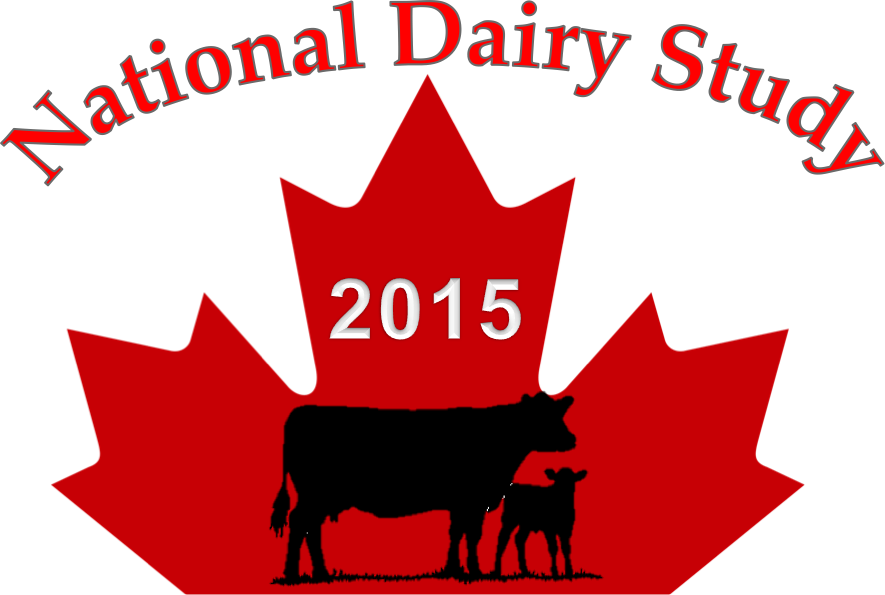National Dairy Study At A Glance
This page provides statistics regarding the demographics, production and milk quality of Canadian dairy herds. These data reside at the provincial level with the individual milk marketing boards. However, in 2015, for the first time, every producer was assigned a confidential unique code to prevent identification and the information was collected into one dataset so that accurate national statistics could be calculated.
The results of the analyses are presented below and can be downloaded here.
NAtional data
Based on this data there were 11 025 active dairy farms producing an average monthly total milk yield of 692 056hL with a minimum yield of 1 278hL per year and a maximum yield of 30 300 000hL per year. Overall, Canada produced 7 630 000 000hL of milk during this 12-month time period.
Table 1 | Production data for 11 025 Canadian dairy producers from September 1, 2014 to August 31, 2015.
housing types
The majority of provinces attempt to collect data on the barn type and milking system for the lactating herd of all the producers in their organization, however producers are not required to provide this information and in many situations this information is not up-to-date.
The National Dairy Study provided a unique opportunity to encourage the provinces to take the time to collect this information, arrange the transfer of the data from other organizations or up-date their already existing databases.
Due to the differences in how the provinces categorized housing, the current study is only able to calculate statistics based on loose and tie-stall housing. In the future, standardizing housing into pack, free-stall and tie-stall would yield more valuable information and up-dating the information on a regular basis would be an asset.
Some Canadian farms have two or more housing and milking systems for their milking herd. For the purposes of this project the housing or milking system used by the higher proportion of animals was recorded and the other system was not considered in the numbers listed.
Data for housing system was incomplete, but was available on 10 901 farms. There were over 7 450 tie-stall barns (68.3%) on Canadian farms and 3 457 loose housing barns (31.7%). The average yearly milk yield for a farm with tie-stall barn was 454 636hL while the average yield for farms with loose-housing was 1 195 352hL. For the time period of September 1, 2014 to August 31, 2015, 3, 380,000,000hL of milk was produced from cows housed in tie-stall barns and 4,130,000,000hL was produced from loosely housed cows.
Table 2 | Predominant housing data for 10 901 Canadian dairy producers for the 12-month period of Sept 1, 2014-Aug 31, 2015.
milking systems
Data for milking system was also incomplete, but was available on 10 876 farms. Pipeline milking systems were the predominant method of milking with 7,427 farms using this method. The next most common milking system was the parlour system (2,644 farms) followed by automated systems (747) and milking into buckets (58).
Table 3 | Predominant milking systems for 10,876 Canadian dairy producers for the 12-month period of Sept 1, 2014-Aug 31, 2015.
milk yield
The average yearly milk yield for a farm with a pipeline system was 456 740hL while the average yield for farms with a parlour system was 1 250 078hL, an automated system 1 027 600hL and a bucket system 149 364hL. For the time period of September 1, 2014 to August 3 390 000 000hL of milk was produced from cows milked with a pipeline system, 3 310 000 000hL from parlour system, 768 000 000hL from an AMS and 8 663 133 milked using a bucket system.
Table 4 | Cross-tabulation of barn type and milking system of Canadian dairy herds.
milk quality
Somatic cell counts (SCC) are one method of measuring milk quality. White blood cells are the main component of SCCs and increase in response to bacterial pathogens present in the milk and udder of cows. Every time milk is picked up at a farm a sample of the bulk tank milk is submitted to the laboratory where among other tests the SCC is determined. These counts are averaged on a monthly basis and reported back to producers. Penalties can be implemented when the SCC exceeds certain thresholds put in place by the provincial marketing boards. Geometric mean SCC are the preferred measure as they are less influenced by occasional fluctuations.
Table 5 | Geometric mean Somatic Cell Count for each Canadian province
Table 6 | Geometric mean Somatic Cell Count by milking system for Canadian dairy farms
Watch dr. cathy bauman’s research vlog
Check out Cathy’s video summary of her role in the National Dairy Study.
organic operations
Not all provinces record information on the organic status of their farms, therefore based on data from eight provinces there are 97 organic dairy operations (1.9%) producing an average yearly milk yield of 596 921hL and a total of 57 900 000hL of milk per year. On average, organic producers had a geometric somatic cell count of 251 000 cells/mL while non-organic farms on average had a SCC of 209 000 cells/mL.
Table 7 | Breakdown of production, quota and milk quality data from 97 organic farms, by province.
